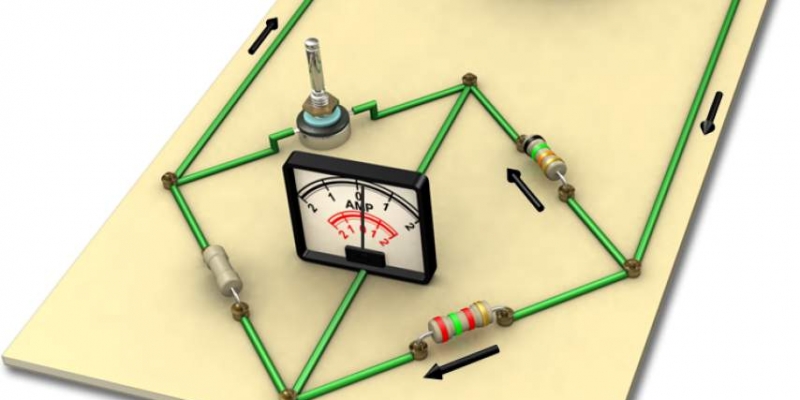Description
This circuit is most commonly used to determine the value of an unknown resistance to an electrical current.
The circuit known as a Wheatstone bridge is most commonly used to determine the value of an unknown resistance to an electrical current. Although first described by British mathematician and scientist Samuel Hunter Christie in 1833, the circuit came to bear the name of Sir Charles Wheatstone, the English physicist who popularized it in the 1840s.
In a typical Wheatstone bridge, four resistors (devices that create resistance to current in a circuit) are positioned in a circuit designed in such a way that the current from a battery splits, flows through the sequence of resistors, then recombines into a single conductor, as shown in the tutorial. Three of these resistors have known values, one of which is variable, or adjustable. The value of the fourth resistor is not known. By studying and manipulating the paths the current can take through the Wheatstone bridge grid, that fourth, unknown resistance can be identified.
The current in this tutorial is shown as flowing from negative to positive through the circuit, which reflects the actual flow of the electrons. (The convention is to think of electricity as flowing from positive to negative, but electrons actually flow in the opposite direction.) When it reaches Point A in the diagram, it splits and travels through either one of two Known Resistors, R1 or R2. Resistance is measured in a unit called an ohm. Notice that when this interactive animation initializes, the resistance at R1 is 1 K ohm (denoted by the horsehoe-like symbol), while at R2 it is 5 K ohm.
After the diverging currents pass through their respective resistors (R1 or R2), each reaches another fork in the road. At this point, if the bridge is not balanced (which is the case when the tutorial opens), some or all of the current from either the R1 or R2 path will diverge down this middle path that bisects the square created by the circuit. The Ammeter positioned on this middle path measures the current flowing through it. The direction of this current is determined by the value of the Variable Resistor (R3) and is reflected in the position of the ammeter needle (to the right or the left of the zero value).
The bridge is not balanced because the ratio of resistance on the known leg (R1/R2) isn’t equal to the ratio on the unknown leg (R3/R4). This is where the variable resistor (known as the rheostat of the bridge) comes into play. It can be adjusted until no current flows down the middle path. When that is achieved, the ammeter reads zero and the bridge is balanced. Achieve this balanced state by adjusting the Variable Resistor slider until the ammeter reads zero and no more current flows through the middle path. Notice how the arrows depicting current direction change as you manipulate the slider. The ohm value is displayed above the slider.
If you were successful in balancing the bridge, you will have noticed an equation appearing beneath the tutorial. If you don’t see it, press the blue Solve Bridge button.
By discovering the value of the variable resistor in the balanced bridge, you are able to determine what the unknown resistance at R4 is, with a little math:
R1/R2 = R3/R4
or
R4 = (R2 * R3) /R1
In the example we just completed, the value of R4 is 50 ohm. You can experiment with this interactive animation a few more times, with different values, by hitting the blue Reset button.
Thanks to MagLab Electrical Engineer Eric Stiers for serving as the science advisor on this tutorial.








Reviews
There are no reviews yet.